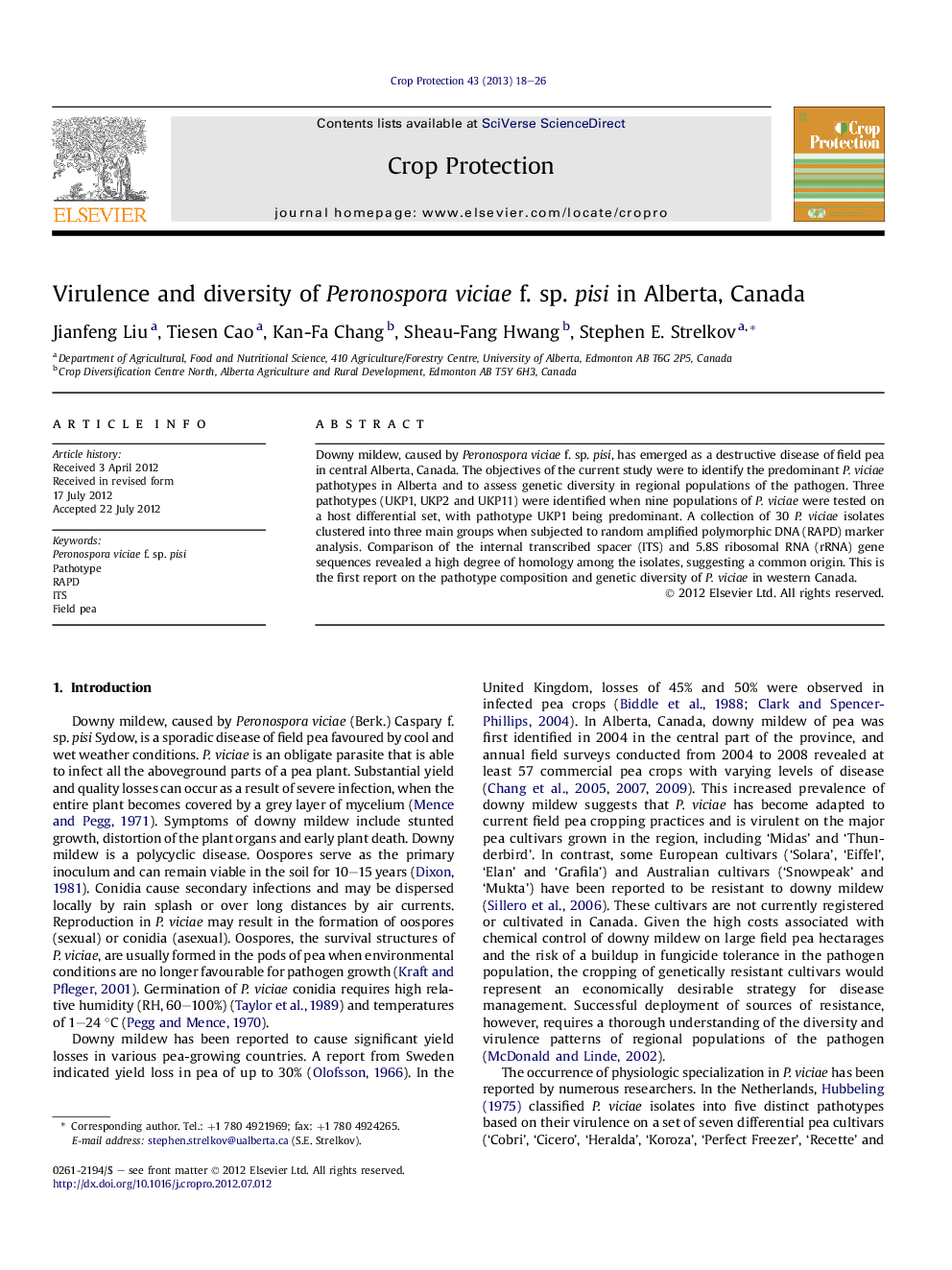| Article ID | Journal | Published Year | Pages | File Type |
|---|---|---|---|---|
| 4506096 | Crop Protection | 2013 | 9 Pages |
Downy mildew, caused by Peronospora viciae f. sp. pisi, has emerged as a destructive disease of field pea in central Alberta, Canada. The objectives of the current study were to identify the predominant P. viciae pathotypes in Alberta and to assess genetic diversity in regional populations of the pathogen. Three pathotypes (UKP1, UKP2 and UKP11) were identified when nine populations of P. viciae were tested on a host differential set, with pathotype UKP1 being predominant. A collection of 30 P. viciae isolates clustered into three main groups when subjected to random amplified polymorphic DNA (RAPD) marker analysis. Comparison of the internal transcribed spacer (ITS) and 5.8S ribosomal RNA (rRNA) gene sequences revealed a high degree of homology among the isolates, suggesting a common origin. This is the first report on the pathotype composition and genetic diversity of P. viciae in western Canada.
► We characterize Peronospora viciae f. sp. pisi populations from Alberta, Canada. ► Three pathotypes (UKP1, UKP2 and UKP11) are identified with UKP1 being predominant. ► A collection of 30 isolates clusters into three main groups in RAPD marker analysis. ► A high degree of homology is found in the ITS and 5.8S ribosomal RNA sequences.
